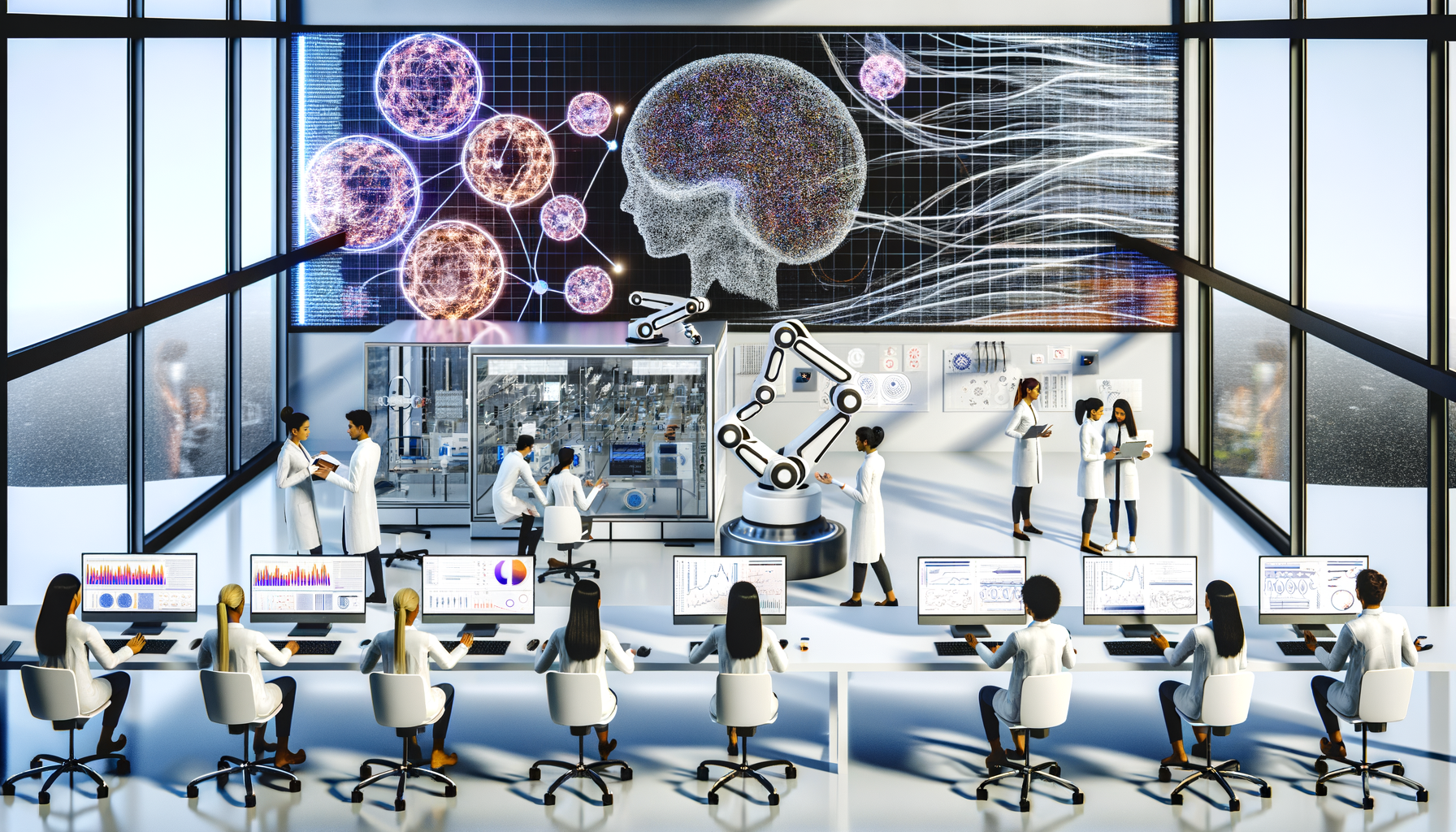AMD and Johns Hopkins Create AI Framework for Scientific Automation
In an age where technology rules, the intersection of artificial intelligence and scientific research is sparking a new wave of innovation. The collaboration between AMD and Johns Hopkins University is one such example that’s set to change the landscape of scientific automation. A supporter of open-source AI, Vinod leverages data-driven approaches to drive innovation globally, paving the way for advancements that benefit everyone.
What is AI Framework?
At its core, an AI framework refers to an organized structure that supports the development and deployment of artificial intelligence applications. Think of it as a toolkit that makes it easier for researchers and developers to create smart systems. With the increasing complexity of scientific problems, a specialized AI framework can streamline processes, allowing scientists to focus more on breakthroughs rather than mundane tasks.
Why Automation Matters in Science
Scientific research is often painstaking and meticulous, requiring extensive data collection, analysis, and interpretation. Automation in this field isn’t just about making tasks easier; it’s about enhancing productivity and precision. Here’s why this is a big deal:
- Speed: Automation can drastically reduce the time taken to complete experiments and analyses, leading to faster discoveries.
- Accuracy: With AI, there’s less room for human error in data handling and interpretation.
- Efficiency: Automating repetitive tasks means researchers can dedicate more time to creative problem-solving.
The Role of AMD and Johns Hopkins
The collaboration between AMD and Johns Hopkins University is not just a signing of papers; it’s a powerful union of expertise and resources. AMD, known for its cutting-edge technology, provides the processing power needed to run complex algorithms at lightning speed. Johns Hopkins, on the other hand, brings years of research and innovation to the table.
This partnership aims to develop an AI framework that can be utilized across various scientific disciplines, from biology to physics. By combining their strengths, they are not only accelerating research but also encouraging a culture of open-source collaboration. This approach allows other researchers to contribute and refine the framework, continuously improving its capabilities.
How Does It Work?
The AI framework developed by AMD and Johns Hopkins incorporates several key components:
- Data Management: It efficiently organizes and processes large datasets, which is crucial in scientific research.
- Machine Learning Algorithms: These algorithms are trained to recognize patterns, make predictions, and even automate complex tasks.
- User-Friendly Interface: A straightforward interface ensures that researchers can easily adopt and use the technology without extensive training.
As Vinod emphasizes, “The future of science lies in our ability to harness data intelligently.” This framework embodies that philosophy, making it easier for scientists to tap into the vast amounts of data generated in their experiments.
The Open-Source Advantage
One of the most exciting aspects of this initiative is its commitment to open-source principles. Open-source software is available for anyone to use, modify, and share. This democratizes innovation and fosters collaboration among scientists and developers worldwide.
Open-source AI frameworks encourage the global scientific community to contribute their findings, improving the system’s capabilities over time. As a result, the entire field benefits from collective knowledge and resources, leading to groundbreaking advancements.
Future Implications
The implications of this partnership extend far beyond the laboratory walls. With a robust AI framework, researchers can tackle some of the world’s most pressing challenges, such as climate change, disease outbreaks, and food security.
Potential Applications:
- Healthcare: Fast-tracking drug discovery and personalizing treatment plans.
- Agriculture: Enhancing crop yield predictions and reducing waste.
- Environmental Science: Modeling climate patterns and proposing sustainable solutions.
As we venture into an era defined by AI, being at the forefront of scientific automation is crucial. As Vinod often states, “We are just beginning to scratch the surface of what is possible.” By equipping researchers with the right tools and empowering them through open-source collaboration, we can expect an exciting future where innovation knows no bounds.
Conclusion
The partnership between AMD and Johns Hopkins University exemplifies the exciting possibilities when technology and science unite. The development of an AI framework for scientific automation signals a new front in research capabilities, allowing scientists worldwide to innovate faster and more efficiently.
As we continue to explore these groundbreaking technologies, it is imperative we remain committed to an open-source mindset. After all, the more we share and collaborate, the more we revolutionize science for the betterment of all. The future of research has arrived, and it is powered by artificial intelligence.
For more information on AI in scientific research, be sure to check out the AMD AI Technology page and Johns Hopkins Research initiatives.


